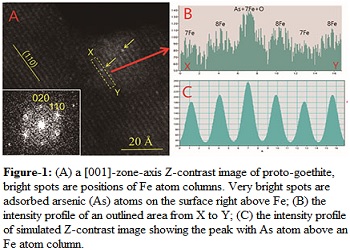
Huifang Xu
University of Wisconsin–Madison, USA
Title: Understanding interface and surface structures of Nano-phases in natural Fe-oxyhydroxide and Fe-bearing olivine minerals
Biography
Biography: Huifang Xu
Abstract
Understanding interface structures, nano-precipitates, vacancies, impurities and adsorbed atoms on mineral surfaces are important to elucidate formation mechanism and reactions of minerals in the earth environments. Aberration-corrected Z-contrast imaging can provide chemical images with sub-Å resolution. Z-contrast images are HAADF images with atomic resolution. Multiple diffraction effects that appear in high-resolution transmission electron microscopic (HRTEM) images can be eliminated or minimized in Z-contrast images, because Z-contrast imaging uses non-coherent elastically scattered electrons at high scattering angle. We can obtain positions of atoms directly over a large range of thickness with Z-contrast to help distinguish columns of different atoms and their occupancies along the beam direction. Interface structures and crystal structures of nano-minerals and nano-precipitates can be solved by combining the Z-contrast imaging and ab initio calculation using density functional theory (DFT) methods. Vacancies, impurities, adsorbed heavy atoms can be also revealed directly. Vacancy ordering in Fe-bearing olivine and Fe-sulfides, adsorbed heavy metals (e.g., As, Au, U) on Fe-oxyhydroxide minerals are resolved clearly. Z-contrast images of the Fe-oxyhydroxides show ordered FeOOH proto-goethite nano-domains intergrown with nanophase goethite. The FeOOH nanophase is a precursor to the goethite. DFT calculations indicate that goethite is more stable than proto-goethite. Our results suggest that ordering between Fe and vacancies in octahedral sites result in the transformation from feroxyhyte to goethite through a proto-goethite intermediate phase. Combining Z-contrast images and TEM-EDS reveals that arsenate (AsO43-) tetrahedra are preferentially adsorbed on the proto-goethite (001) surface.


